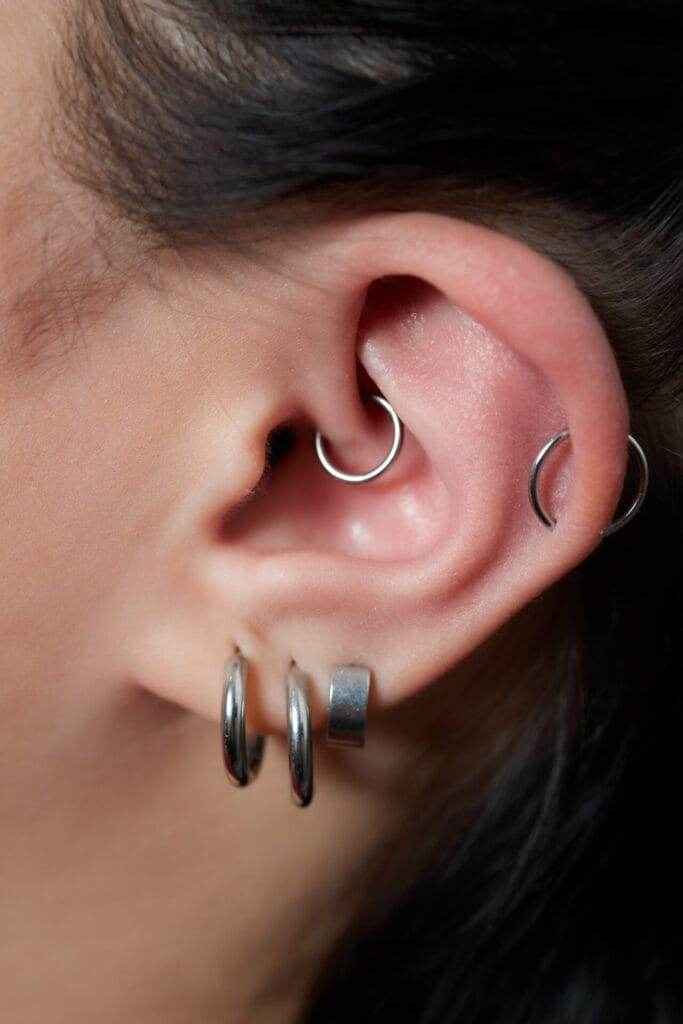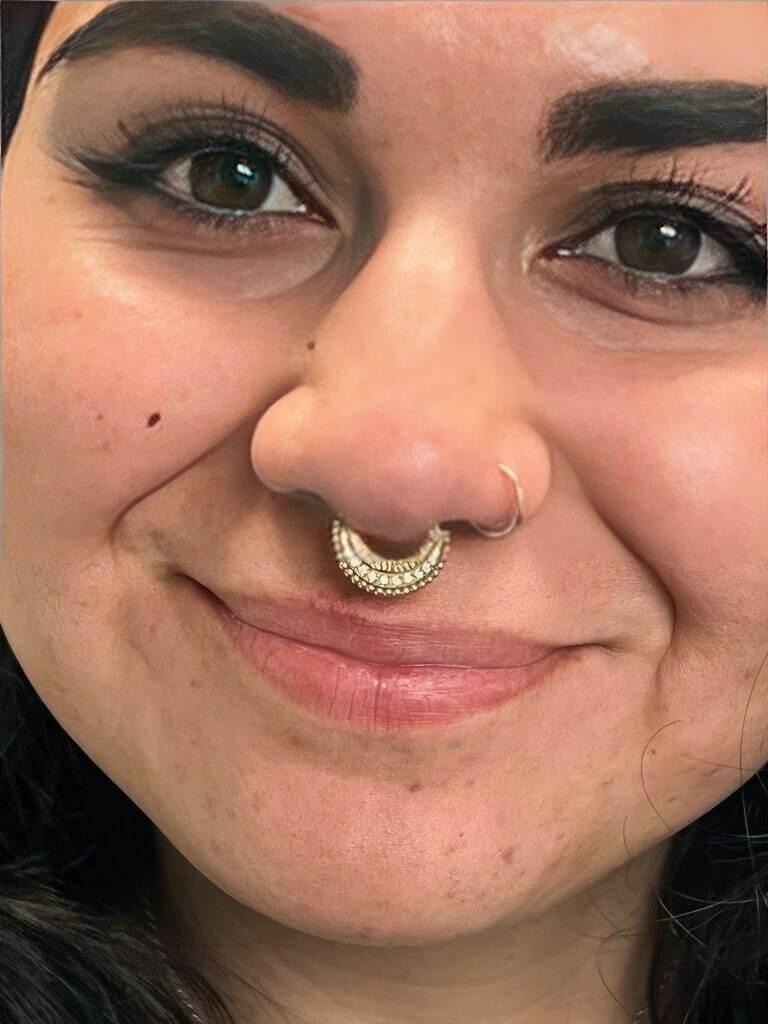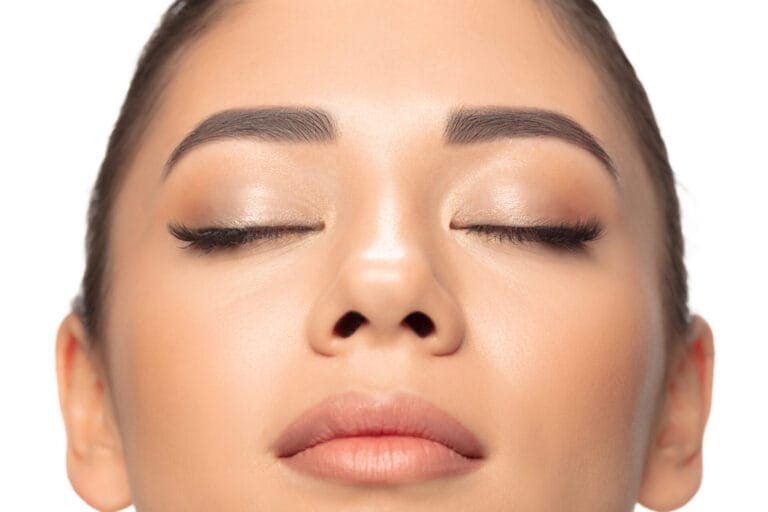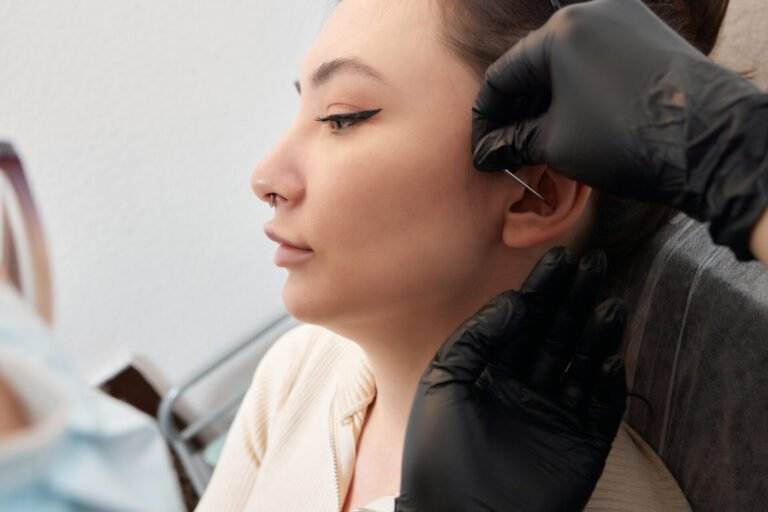Piercings have become increasingly popular in modern times, with people of all ages and backgrounds embracing this form of body modification. From simple earlobe piercings to more elaborate facial and body piercings, individuals are using piercings as a way to express their personal style and individuality. In this article, we will explore the history of piercings, discuss the factors to consider when choosing a piercing, provide tips for finding a reputable piercing studio, and delve into the importance of aftercare. We will also explore current piercing trends, discuss the art of placement and the different types of piercing jewelry available, and examine how piercings can be used as a form of self-expression. Additionally, we will address the challenges of wearing piercings in a professional setting, debunk common myths and misconceptions about piercings, and provide tips for seniors and minors who are interested in getting piercings.
The History of Piercing: From Ancient Times to Modern Day
Piercings have a rich history that dates back thousands of years. Throughout history, different cultures have embraced piercings for various reasons, including religious and cultural significance, as well as for aesthetic purposes. In ancient times, piercings were often used as a form of body adornment and were seen as a symbol of wealth and status. For example, in ancient Egypt, both men and women wore earrings as a sign of their social standing. In other cultures, such as the Mayans and Aztecs, nose piercings were common and were believed to have spiritual significance.
Over time, piercing techniques and styles have evolved. In the 1970s and 1980s, the punk movement popularized more extreme forms of body piercing, such as multiple ear piercings and facial piercings. Today, there is a wide range of piercing options available, from traditional earlobe piercings to more unique and unconventional piercings, such as dermal piercings and surface piercings. The popularity of piercings continues to grow, with individuals using them as a form of self-expression and a way to enhance their personal style.
Choosing the Right Piercing: Factors to Consider
When choosing a piercing, there are several factors to consider. One of the most important factors is the level of pain associated with the piercing. Some piercings, such as earlobe piercings, are relatively painless, while others, such as nipple or genital piercings, can be more painful. It’s important to research the pain level associated with the piercing you are interested in and determine if you are comfortable with it.
Another factor to consider is the healing time required for the piercing. Some piercings, such as earlobe piercings, heal relatively quickly, while others, such as cartilage piercings or surface piercings, can take several months to fully heal. It’s important to be aware of the healing time required for the piercing you are interested in and be prepared to properly care for it during the healing process.
Personal style is also an important factor to consider when choosing a piercing. Different piercings can complement different facial features and styles. For example, a septum piercing can add an edgy and unique touch to a person’s look, while a simple stud earring can be more subtle and classic. It’s important to choose a piercing that aligns with your personal style and enhances your overall appearance.
When choosing a piercing, it’s also crucial to research and select a reputable piercing artist. Look for an artist who has experience and expertise in the specific type of piercing you are interested in. Ask for recommendations from friends or do online research to find reviews and testimonials from previous clients. It’s important to choose an artist who uses sterile techniques and follows proper safety protocols to minimize the risk of infection or complications.
The Importance of Aftercare: Keeping Your Piercings Healthy and Beautiful
Proper aftercare is crucial for keeping your piercings clean, healthy, and beautiful. After getting a new piercing, it’s important to follow the aftercare instructions provided by your piercing artist. These instructions may include cleaning the piercing with a saline solution or a gentle cleanser, avoiding touching or twisting the jewelry, and avoiding swimming or submerging the piercing in water.
Cleaning your piercing regularly is essential for preventing infection and promoting healing. Use a saline solution or a gentle cleanser recommended by your piercing artist to clean the piercing twice a day. Gently clean around the piercing and rinse thoroughly with clean water. Avoid using harsh soaps or alcohol-based products, as these can irritate the piercing and slow down the healing process.
It’s also important to avoid touching or twisting the jewelry in your new piercing. Touching the piercing with dirty hands can introduce bacteria and increase the risk of infection. Twisting the jewelry can also cause irritation and delay the healing process. Leave the jewelry alone and let it heal naturally.
In addition to proper cleaning and care, it’s important to avoid certain activities that can irritate or damage your new piercing. Avoid swimming in pools, hot tubs, or natural bodies of water until your piercing is fully healed. These environments can introduce bacteria and increase the risk of infection. It’s also important to avoid sleeping on your new piercing, as this can cause irritation and slow down the healing process.
Piercing Trends: What’s Hot Right Now
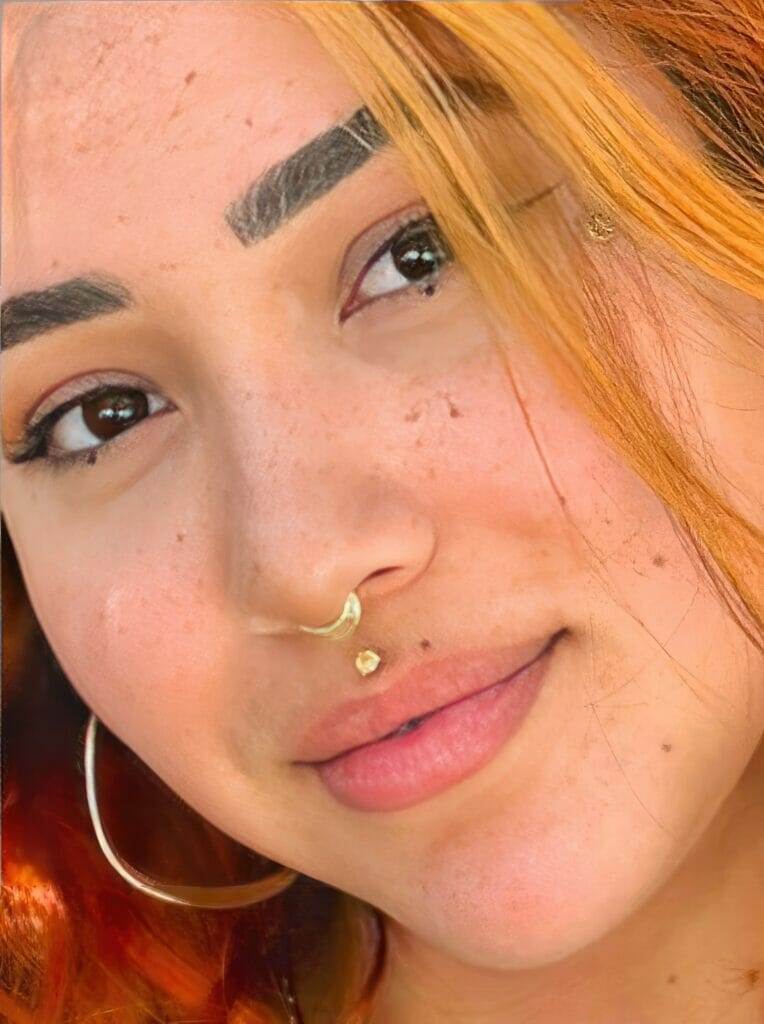
Piercing trends are constantly evolving, with new styles and jewelry options emerging all the time. Currently, there are several piercing trends that are particularly popular.
One trend that has gained popularity in recent years is multiple ear piercings. Instead of just one or two earlobe piercings, individuals are opting for multiple piercings along the ear cartilage. This trend allows for more creativity and personalization, as individuals can mix and match different types of earrings and create unique combinations.
Another popular trend is daith piercings. The daith is a small piece of cartilage located in the innermost part of the ear, and daith piercings involve piercing this area. Daith piercings have gained popularity for their unique and edgy look, and they can be adorned with various types of jewelry, such as hoops or studs.
In recent years, septum piercings have also become increasingly popular. A septum piercing involves piercing the thin piece of cartilage between the nostrils. This type of piercing can be adorned with a variety of jewelry options, including captive bead rings, horseshoe rings, or clickers. Septum piercings can add an edgy and unique touch to a person’s look.
Dermal piercings are another trend that has gained popularity in recent years. Dermal piercings involve inserting an anchor under the skin and attaching a piece of jewelry to the anchor. These piercings can be placed on various parts of the body, such as the chest, back, or face, and they can be adorned with different types of jewelry, such as gemstones or spikes.
The Art of Placement: Creating a Flattering and Balanced Look
Proper placement is crucial for creating a flattering and balanced look with piercings. The placement of a piercing can enhance certain facial features and create a more harmonious overall appearance.
When considering the placement of a piercing, it’s important to take into account the shape of your face and the features you want to highlight or downplay. For example, if you have a round face shape, a vertical labret piercing can help elongate your face and create the illusion of more length. On the other hand, if you have a long face shape, a horizontal eyebrow piercing can help balance out your features and create the illusion of width.
It’s also important to consider the placement of existing piercings when adding new ones. The placement of multiple piercings should be balanced and symmetrical to create a cohesive look. For example, if you have a helix piercing on one ear, consider adding a similar piercing on the other ear to create balance.
Additionally, the placement of a piercing should take into account the natural contours and anatomy of the body. Certain areas of the body may be more suitable for certain types of piercings based on their structure and composition. For example, a surface piercing may be more suitable for an area with enough skin and tissue to support the jewelry.
When considering the placement of a piercing, it can be helpful to consult with a professional piercing artist. They can provide guidance and recommendations based on their expertise and experience. They can also take into account your personal style and preferences to create a customized and flattering look.
Piercing Jewelry: Materials, Styles, and Accessories
There is a wide range of piercing jewelry available, with different materials, styles, and accessories to choose from. The type of jewelry you choose can greatly impact the overall look and feel of your piercing.
One of the most important factors to consider when choosing piercing jewelry is the material. It’s important to choose jewelry made from high-quality materials that are safe for your body. Some common materials used for piercing jewelry include surgical steel, titanium, gold, and bioplast. Surgical steel and titanium are hypoallergenic options that are less likely to cause irritation or allergic reactions. Gold is also a popular choice for its durability and aesthetic appeal. Bioplast is a flexible and biocompatible material that is often used for initial piercings or sensitive areas.
In addition to material, there are various styles of jewelry to choose from. Some common styles include studs, hoops, captive bead rings, barbells, and clickers. Studs are a classic and versatile option that can be worn in various types of piercings. Hoops are another popular choice that can add a more edgy or bohemian vibe to your look. Captive bead rings are a versatile option that can be worn in various types of piercings, and they can be adorned with different types of beads or charms. Barbells are often used for tongue or nipple piercings and can be straight or curved. Clickers are a type of hinged ring that can be easily opened and closed, making them convenient for changing jewelry.
Accessories can also be added to piercing jewelry to enhance the overall look. Some common accessories include gemstones, spikes, charms, or dangles. Gemstones can add a pop of color and sparkle to your piercing, while spikes can create a more edgy and alternative look. Charms and dangles can add movement and visual interest to your jewelry.
When choosing piercing jewelry, it’s important to consider your personal style and preferences. Choose jewelry that reflects your individuality and enhances your overall appearance. It’s also important to choose jewelry that is appropriate for the specific type of piercing you have. Consult with your piercing artist for recommendations and guidance.
Piercing as Self-Expression: How Piercings Can Reflect Your Personality
Piercings can be used as a form of self-expression, allowing individuals to showcase their personality and individuality. Different types of piercings can be used to reflect different styles, attitudes, and interests.
For example, individuals who prefer a more edgy and alternative style may opt for piercings such as nose rings, lip piercings, or multiple ear piercings. These types of piercings can add a rebellious and unique touch to a person’s look.
On the other hand, individuals who prefer a more classic and timeless style may opt for more subtle piercings, such as simple stud earrings or a single earlobe piercing. These types of piercings can add a touch of elegance and sophistication to a person’s look.
Piercings can also be used to reflect specific interests or affiliations. For example, individuals who are part of the punk or goth subcultures may choose piercings that align with the aesthetic and values of these subcultures. This can include piercings such as eyebrow piercings, septum piercings, or dermal piercings.
Additionally, individuals may choose piercings that have personal significance or sentimental value. For example, a person may choose to get a piercing in memory of a loved one or to commemorate a significant event in their life. These types of piercings can serve as a reminder of important moments or people in a person’s life.
Ultimately, the types of piercings you choose can be a reflection of your personality, style, and interests. They can be a way to express yourself and showcase your individuality to the world.
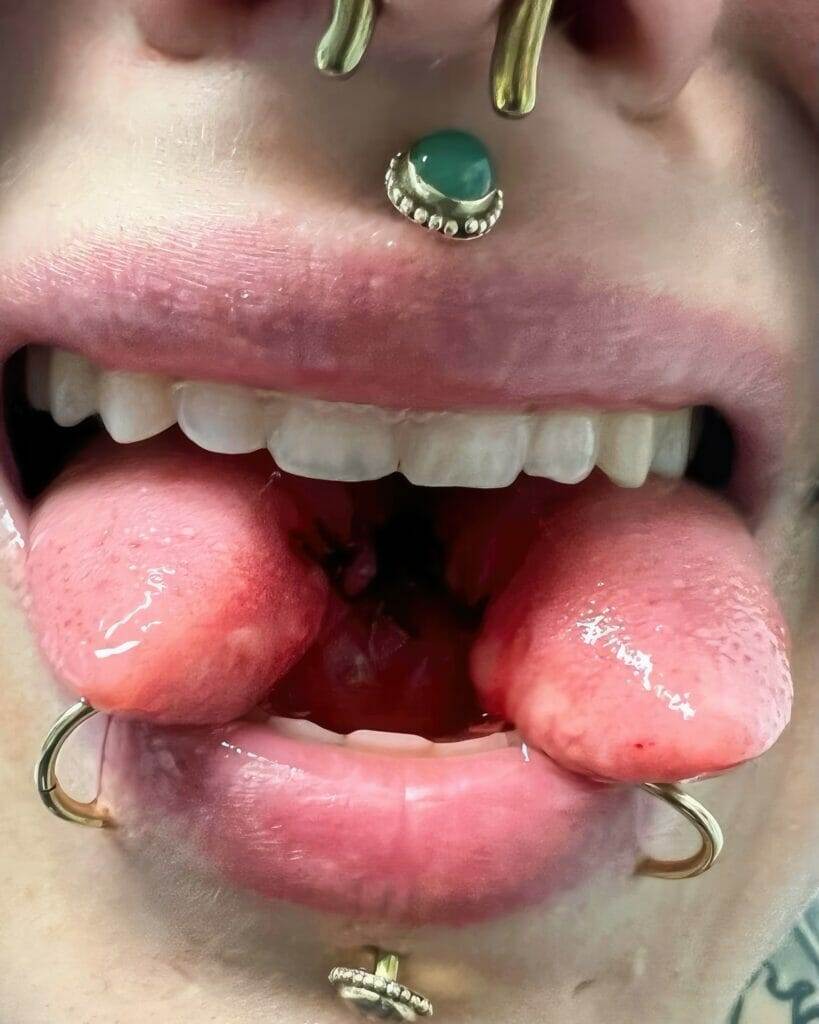
Piercing and Professionalism: Navigating the Workplace
Wearing piercings in a professional setting can present challenges, as many workplaces have strict dress codes and expectations regarding appearance. However, with some careful consideration and planning, it is possible to navigate workplace dress codes while still expressing yourself through your piercings.
First and foremost, it’s important to familiarize yourself with your workplace’s dress code policy. Some workplaces may have specific guidelines regarding visible piercings, while others may have more lenient policies. Take the time to read and understand the dress code policy so that you can make informed decisions about your piercings.
If your workplace has strict policies regarding dress code, it is important to adhere to them. Dressing appropriately shows respect for the company’s values and professionalism. It also helps create a positive image for both the individual and the organization. By following the dress code, you demonstrate your commitment to the company’s standards and contribute to a cohesive and unified work environment. Additionally, dressing appropriately can enhance your confidence and productivity, as it allows you to focus on your work rather than worrying about your appearance. Overall, respecting and following the dress code is crucial for maintaining a professional atmosphere and contributing to the success of the workplace.

